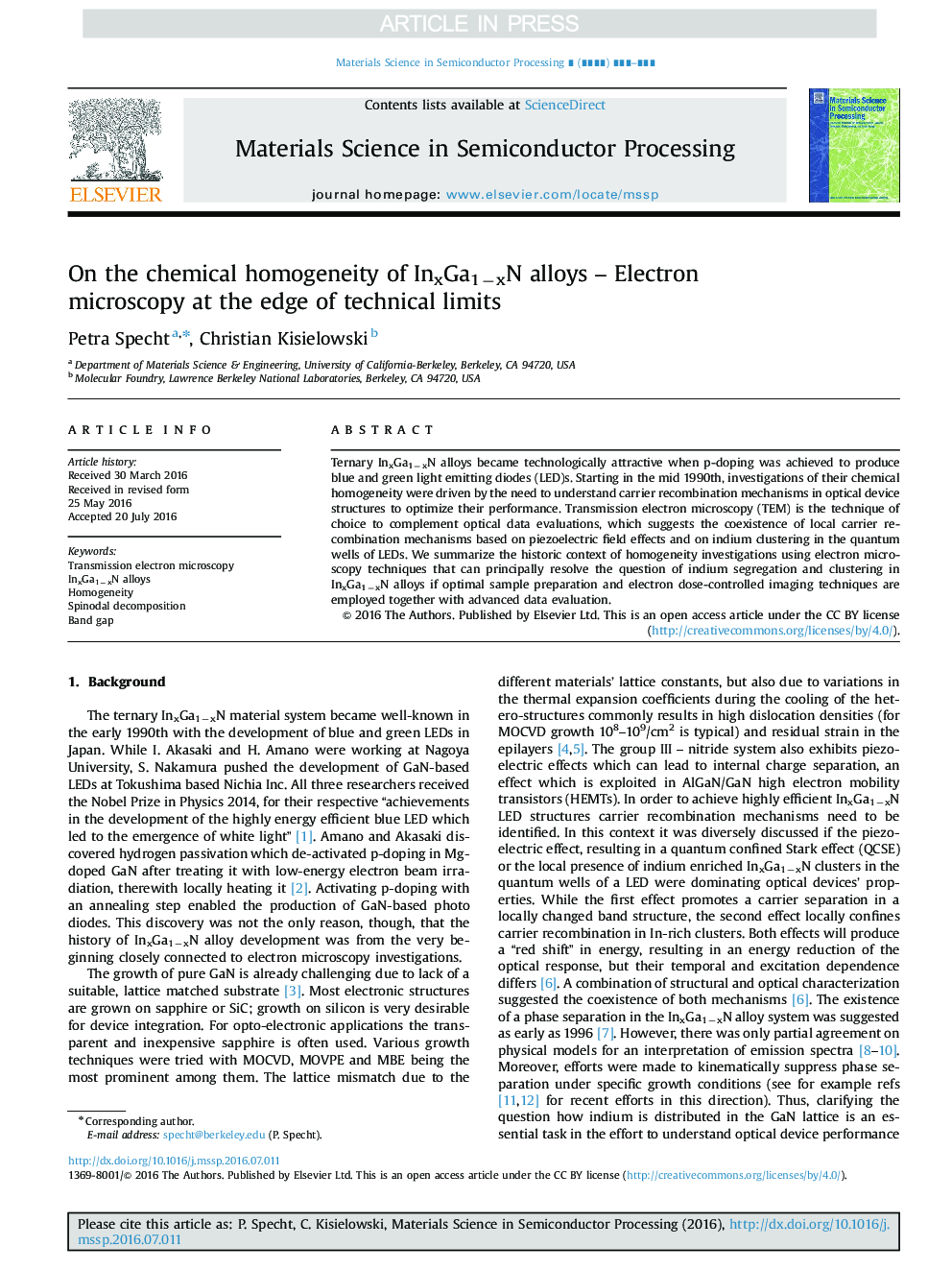| Article ID | Journal | Published Year | Pages | File Type |
|---|---|---|---|---|
| 5006056 | Materials Science in Semiconductor Processing | 2017 | 11 Pages |
Abstract
Ternary InxGa1âxN alloys became technologically attractive when p-doping was achieved to produce blue and green light emitting diodes (LED)s. Starting in the mid 1990th, investigations of their chemical homogeneity were driven by the need to understand carrier recombination mechanisms in optical device structures to optimize their performance. Transmission electron microscopy (TEM) is the technique of choice to complement optical data evaluations, which suggests the coexistence of local carrier recombination mechanisms based on piezoelectric field effects and on indium clustering in the quantum wells of LEDs. We summarize the historic context of homogeneity investigations using electron microscopy techniques that can principally resolve the question of indium segregation and clustering in InxGa1âxN alloys if optimal sample preparation and electron dose-controlled imaging techniques are employed together with advanced data evaluation.
Related Topics
Physical Sciences and Engineering
Engineering
Electrical and Electronic Engineering
Authors
Petra Specht, Christian Kisielowski,
